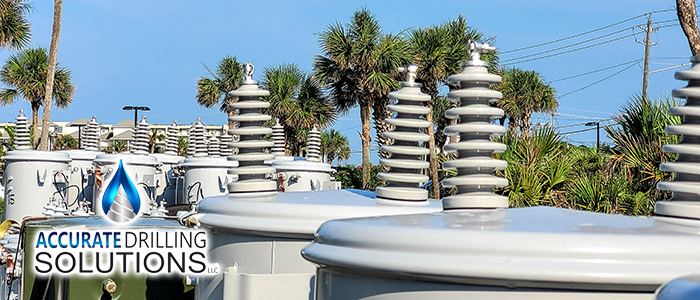
Solving Declining Well Yield Issues
Declining water pressure in your home can be a sign of depleted groundwater sources. Before jumping to conclusions, however, check the condition of any conditioning equipment hooked up to your plumbing—such as water softeners or iron removal systems. Still, lower water pressure may not be a sign of trouble. However, if the water level drops and recharge is slow, you may get no water at your faucet.
Two Potential Causes of Low-Water Flow
Low water pressure at your tap is often the result of one—or both—of two problems.
- Diminished water levels in your aquifer due to natural causes—such as drought or overpumping. Even if the well is still able to produce water, you may need a pumping system that makes it easy for people and guests not familiar with the premises (like repairmen or plumbers) to turn off.
- A blockage
If properly drilled, constructed and maintained, your private well can provide a steady supply of safe drinking water for years. However, if some kind of blockage rears its ugly head, well yield may be lowered. A loss in water yield is usually due to one or more of these three problems:
- Fine sediments such as sand, silt and clay can cause physical plugging in a pipe.
- Hardened mineral deposits left behind as a residue.
- Clogging of screens and intakes by colonies of bacteria or algae.
It’s a good idea to test the water in new wells for pH, hardness, alkalinity and acidity when they are first completed. The chemistry of your well is determined by the minerals in the underground formations that are encountered while drilling. Air can enter into a well when it is pumped down, and the oxygen in that air can cause chemical changes in the rock. This will impact the sediment in your well water.
Reduced Water Well Yields: Possible Treatments
Methods of cleaning usually consist of adding chemicals to water and agitating the mixture in order to flush dirt out from inside well pipes.
Hydrofracturing is a technique that increases water pressure in the well, opening up new fissures and channels through which gas can flow. It’s especially effective in cases of an encrustation blockage. In hydrofracking, several chemicals are pumped underground to break apart rock or dissolve substances in order to release trapped gas. This technique can use detergents, acids and biocides as part of the formula.
Typically, a water well professional will use several different techniques. They will be able to solve your water well problems because they have all the necessary equipment, experience and expertise. The pump is often removed, because rehabilitation costs less than drilling a new well and requires fewer permits if the old well must be sealed.
At Accurate Drilling, our specialty is fixing low-flow issues. If you notice a drop in water pressure in your home, or if the discharge from your faucet becomes cloudy, give us a call. We can help you take the appropriate steps to restore your well’s flow rate.
continue reading
Related Posts
Palmetto Business Owners’ Guide to Well System Efficiency For businesses
Water Quality Solutions for Zephyrhills Homeowners For homeowners in Zephyrhills
Wesley Chapel’s Guide to Commercial Pump Installation For businesses and





